Dragon fruit, also known as pitaya, is a visually striking tropical fruit that has been steadily gaining popularity worldwide. Its exotic pink or yellow skin, white or red flesh speckled with tiny seeds, and mild, sweet taste make it a favorite for both gardeners and fruit lovers. However, many dragon fruit growers encounter a common challenge — getting the plant to produce a good yield. While dragon fruit plants produce large, beautiful flowers, they do not always self-pollinate efficiently, and this can lead to poor fruit set.
Understanding how to pollinate your dragon fruit plants successfully is crucial if you want to enjoy abundant harvests. This guide will walk you through everything you need to know about dragon fruit pollination, from plant biology to hand-pollination techniques, ensuring you can enjoy fresh, homegrown pitayas season after season.
1. Understanding Dragon Fruit Pollination
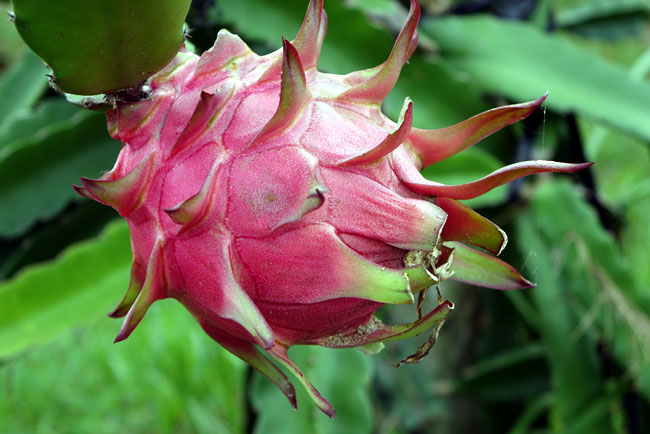
Dragon fruit plants belong to the cactus family (Cactaceae) and are vining succulents that produce large, fragrant, night-blooming flowers. The flowers typically open in the evening and close by early morning, meaning pollination needs to happen overnight.
There are two main pollination types for dragon fruit:
- Self-pollinating varieties – These have both male and female reproductive structures that are compatible with each other. They can set fruit without cross-pollination but still benefit from hand-pollination to improve yield. Examples include Hylocereus undatus.
- Self-sterile varieties – These require pollen from a different plant variety to set fruit. Examples include Hylocereus polyrhizus. Without cross-pollination, flowers from these plants will not produce fruit.
Knowing your variety is the first step to ensuring successful pollination.
2. When Do Dragon Fruit Flowers Bloom?
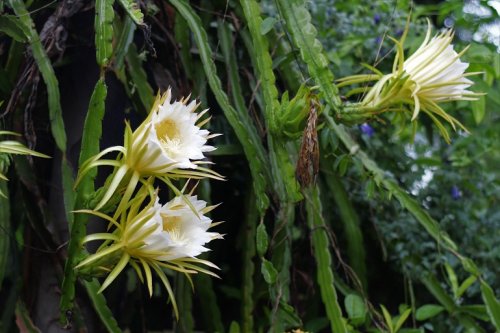
Dragon fruit flowers are known as ephemeral bloomers, meaning each flower lasts only for a single night. They generally bloom during warm months, often between late spring and late summer, depending on your climate.
The bloom cycle works like this:
- Late afternoon to early evening – Flower buds start opening.
- Nighttime (around 8 p.m. to 12 a.m.) – Flowers are fully open, fragrance peaks, and pollination is most effective.
- Early morning – Flowers start closing and wilting by sunrise.
This narrow window means you must be prepared to pollinate on the night of blooming. Missing this timeframe significantly reduces the chances of fruit development.
3. Natural Pollinators for Dragon Fruit
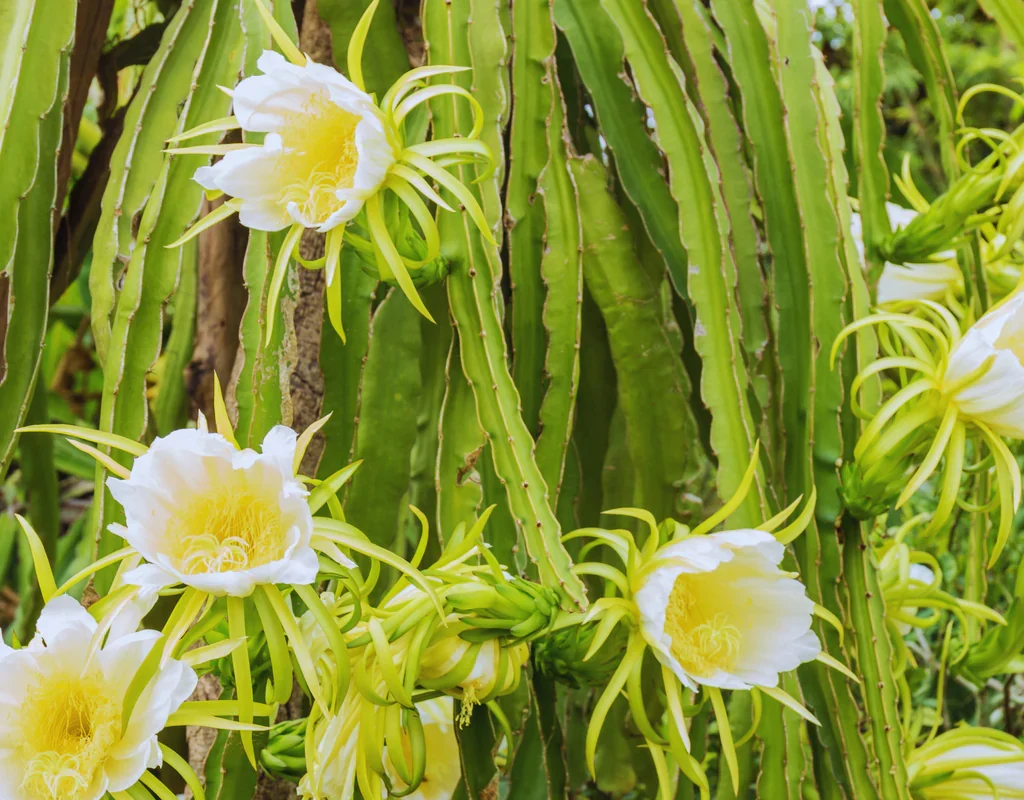
In nature, dragon fruit is pollinated by nocturnal creatures like moths and bats. However, in many home gardens or urban areas, these pollinators are absent or too few to ensure reliable pollination.
- Moths – Attracted to the flower’s sweet scent.
- Bats – Feed on nectar while transferring pollen between flowers.
- Bees – Sometimes assist with early morning pollination before flowers close, but this is less effective.
If you live in an area with limited natural pollinator activity, you will likely need to hand-pollinate your flowers.
4. How to Identify Male and Female Parts of the Flower
Before hand-pollination, it’s important to recognize the flower’s reproductive parts:
- Stamens (Male Part) – These are the long filaments topped with yellow anthers, which produce pollen.
- Stigma (Female Part) – Located at the center of the flower, this is a sticky surface designed to catch pollen.
Successful pollination occurs when fresh pollen from the stamens is transferred to the stigma, ideally within the bloom’s peak opening time.
5. Step-by-Step Guide to Hand-Pollinating Dragon Fruit
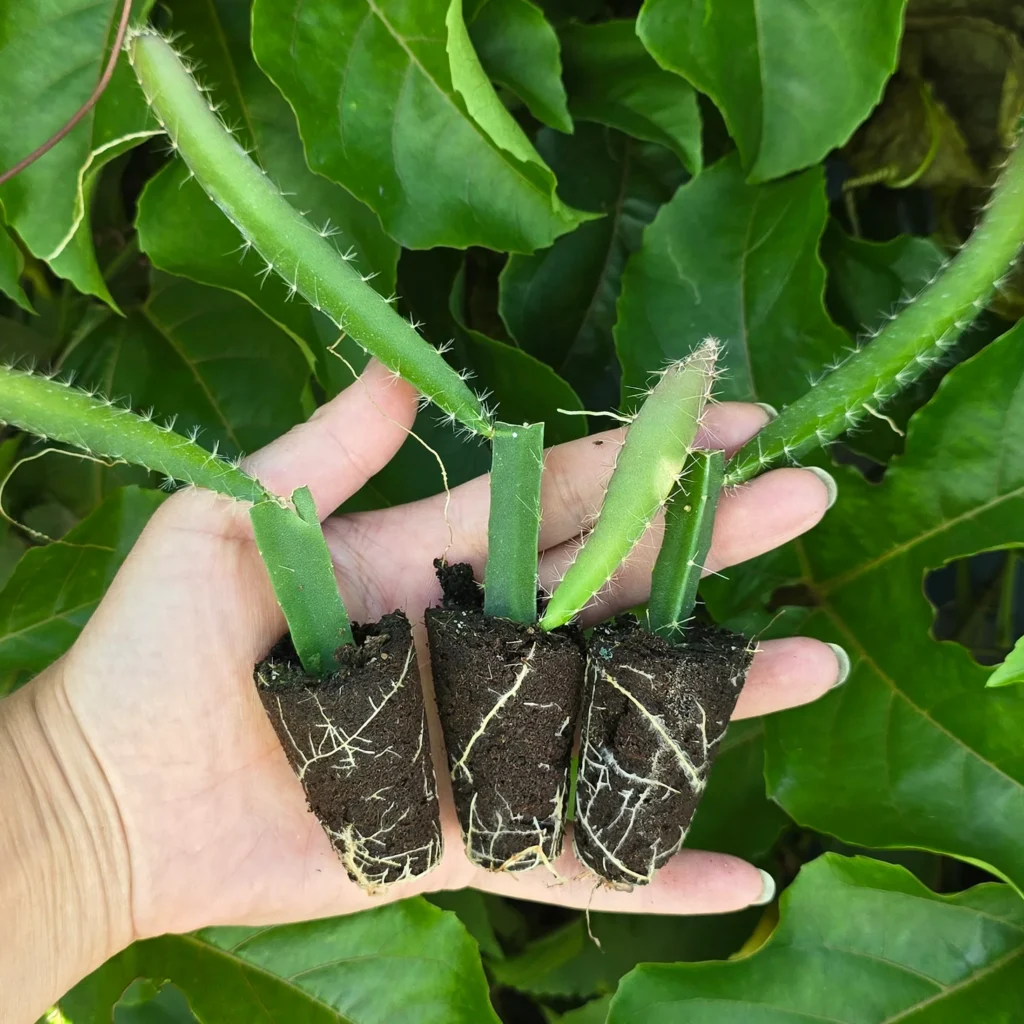
Hand-pollination may sound intimidating, but it’s actually simple once you know the steps.
Step 1: Gather Tools
- Small paintbrush, cotton swab, or your fingers.
- A flashlight or headlamp (since you’ll work at night).
- Optional: A small container to collect pollen.
Step 2: Choose the Right Time
- Pollinate between 8 p.m. and midnight when flowers are fully open and pollen is fresh.
Step 3: Collect Pollen
- Gently brush or dab your tool over the yellow anthers to pick up pollen.
- For self-sterile varieties, make sure to collect pollen from a different plant variety.
Step 4: Apply Pollen to Stigma
- Touch the pollen-coated tool to the flower’s stigma, ensuring good contact so the sticky surface captures pollen.
Step 5: Repeat for All Open Flowers
- If multiple flowers are open, repeat the process for each one.
6. Cross-Pollination for Higher Yield
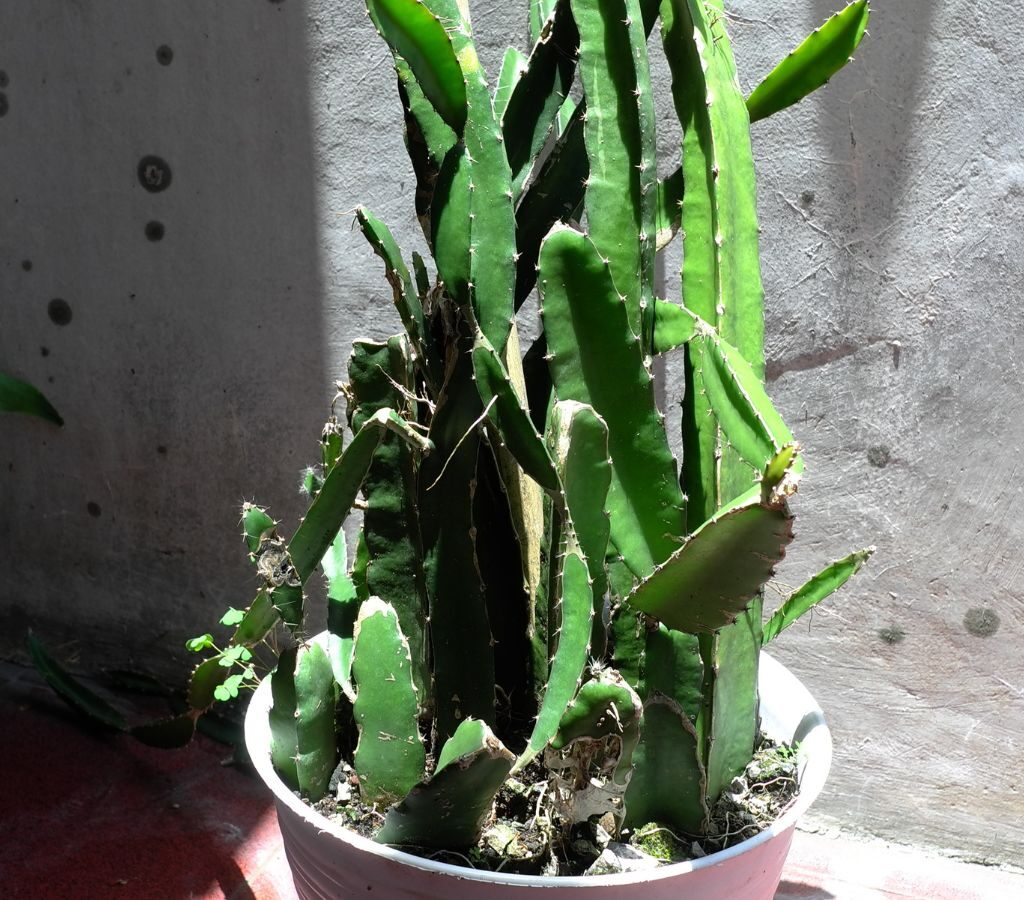
Even self-pollinating varieties often benefit from cross-pollination. When you transfer pollen between two genetically different plants, it can lead to larger, sweeter fruits.
- Grow at least two different dragon fruit varieties to improve pollination success.
- Alternate pollen between the two plants during blooming nights.
This is especially important for commercial growers or those aiming for maximum harvests.
7. Pollen Storage Tips
Sometimes, flowers from different plants bloom on different nights, making cross-pollination tricky. Fortunately, dragon fruit pollen can be stored for short periods:
- Refrigerator method – Store pollen in a sealed container with silica gel for up to a week.
- Freezer method – Can preserve pollen for up to three months.
Before use, let pollen reach room temperature to avoid moisture damage.
8. Common Pollination Problems and Solutions
| Problem | Cause | Solution |
|---|---|---|
| No fruit set | Wrong variety pairing or no cross-pollination | Identify variety and use compatible pollen source |
| Flowers dropping | Missed blooming window | Monitor buds daily to catch bloom night |
| Small or misshapen fruit | Insufficient pollen transfer | Hand-pollinate thoroughly with fresh pollen |
9. Caring for Plants After Pollination
After successful pollination, the flower will wilt, and the base will begin to swell into fruit over the next 30–50 days.
Post-pollination care includes:
- Watering – Keep soil moist but not waterlogged.
- Fertilization – Apply balanced fertilizer to support fruit development.
- Pest control – Protect developing fruits from birds, ants, and other pests.
10. Benefits of Successful Hand-Pollination
When done correctly, hand-pollination can:
- Increase fruit set by up to 90% in self-sterile varieties.
- Produce larger, sweeter fruits.
- Allow harvests even in areas without natural pollinators.
It also gives you better control over your plant’s reproductive process, ensuring consistent and predictable yields.
Final Thoughts
Pollinating dragon fruit plants successfully is part science, part timing, and part dedication. By learning the biology of your plant, recognizing bloom times, and using hand-pollination techniques, you can enjoy abundant harvests even in areas lacking natural pollinators.
Once you’ve mastered the process, you’ll not only be rewarded with vibrant, sweet fruits but also gain a deeper appreciation for the fascinating life cycle of this exotic cactus. The key is preparation — keep your tools ready, watch for blooms, and take advantage of every flowering night. Your taste buds will thank you!
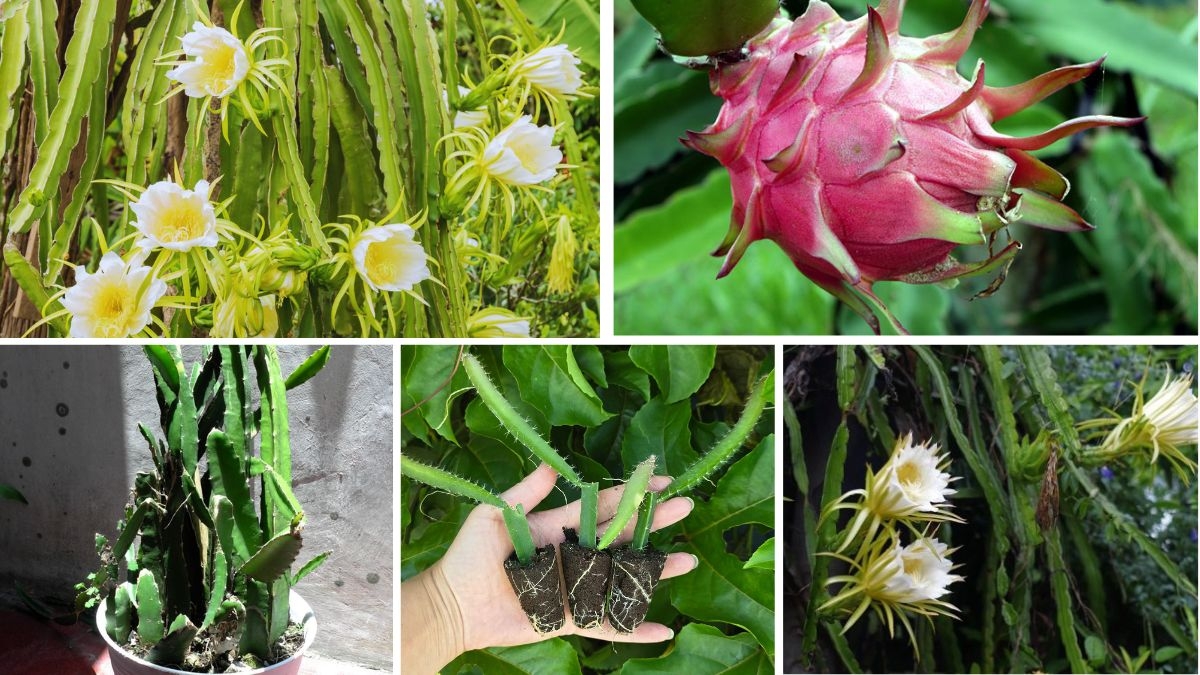





Leave A Comment